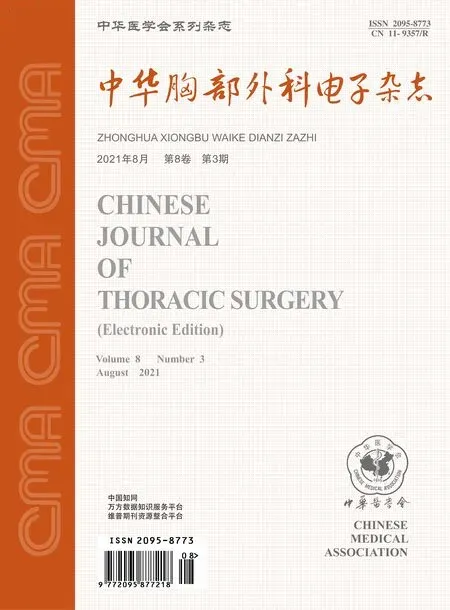Case report of a rare giant left anterior descending coronary artery aneurysm
Bleri ?elmeta, Antoine Mugniot, Thomas Sénage, Jean-Christian Roussel, Antonio Miceli
【Abstract】 Giant coronary artery aneurysm (CAA) is a rare condition, reportedly seen in 0.02-0.2% of patients undergoing coronary angiography. Asymptomatic in most cases, patients may present with angina pectoris, myocardial infarction, cardiac tamponade or sudden death. Given that the natural history of the CAA is still not predictable, the optimal treatment remains still debatable. In this case report, we present a male patient with a sudden non-exertional dyspnea and angina in a context of obesity, multiple large and medium vessels aneurysms and chronic kidney disease (CKD). A contrast CT detected a giant left anterior descending artery (LAD) CAA measuring 73 mm × 47 mm, apparently compressing the circumflex (CX) and the pulmonary artery (PA). After undergoing a full (etiologic and aneurysm extension) panel of exams, the patient underwent a surgical exclusion of the giant CAA and a coronary artery bypass grafting (CABG) by using the left thoracic mammary artery (LITA). The hospitalization was uneventful, and the patient left the hospital completely asymptomatic. In conclusion, even in cases of giant coronary aneurysms, the treatment is surgical by excluding the aneurismatic sac and performing a surgical revascularization.
【Key words】 Giant coronary artery aneurysm; angina; dyspnea; coronary artery bypass grafting (CABG); case report
Introduction
Coronary artery aneurysm (CAA) is defined as a focal luminal dilatation of a coronary segment of at least 1.5 times the diameter of an adjacent reference coronary segment (1). We usually refer to it as a giant CAA in case of a diameter exceeding 4 times the normal reference diameter. The right coronary artery (RCA) is generally more affected (2). However, this is a rare medical condition with a prevalence of 0.3-5% and as low as 0.02% for giant CAA with a diameter >50 mm.
We present the following case in accordance with the CARE reporting checklist (available at: https://dx.doi.org/10.3877/cma.j.issn.2095-8773.2021.03.05).
Case presentation
All procedures performed in studies involving human participants were in accordance with the ethical standards of the institutional and/or national research committee(s) and with the Helsinki Declaration (as revised in 2013). Written informed consent was obtained from the patient.
A 56-year-old-male with morbid obesity presented to the Emergency Department of the University Hospital Center of Nantes (France) with a typical chest pain and non-exertional dyspnea. His medical history included:
? Multiple vascular aneurysms affecting the descending sub-renal aorta and both internal iliac arteries needing repeated surgery;
? Early varicose disease of the lower limbs needing surgery at 20 years old;
? Atrial septal defect (ASD) operated at 6 years old. Atrial flutter;
? Chronic kidney disease (CKD) with a glomerular filtration rate (GFR) of 45 mL/min.
The family history was significative for CKD and ASD.
A CT, required to exclude a pulmonary embolism, showed instead a giant partially thrombosed CAA of the left anterior descending artery (LAD) with a diameter of 73 mm × 47 mm, starting between 2 and 3 cm from the coronary ostia (Figures 1,2). A small CAA of the RCA was also present (13 mm × 8 mm). The coronary angiography confirmed the CAA of the LAD and showed also a slight extrinsic compression of the circumflex (CX) (Figure 3).
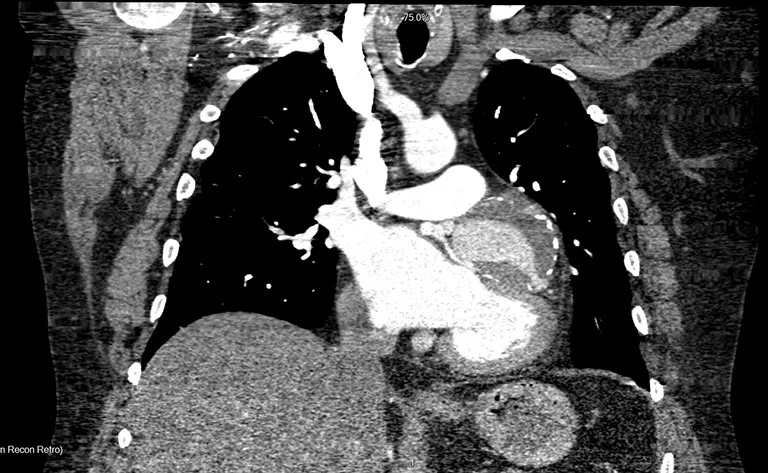
Figure 1 Coronal plane of a contrast thorax CT scan showing the giant coronary aneurysm.
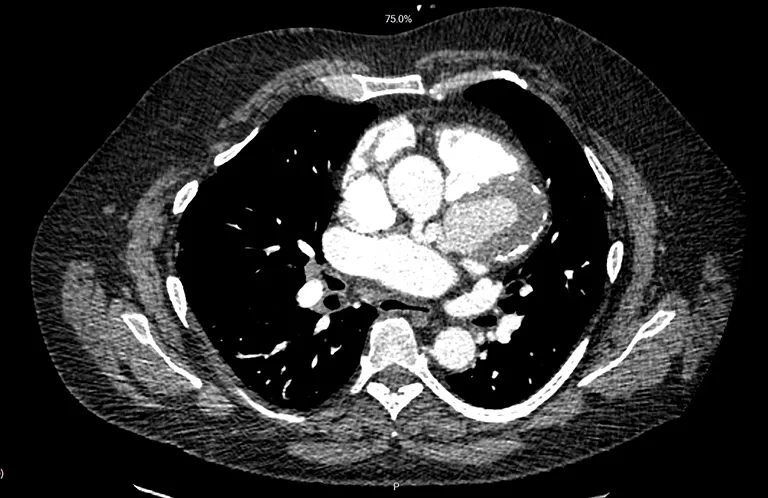
Figure 2 Axial plane of a contrast thorax CT scan showing the giant coronary aneurysm.
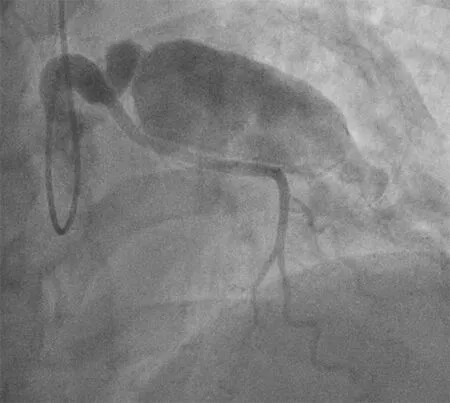
Figure 3 Coronary angiography showing the coronary aneurysm. A slight compression to the circumflex artery is noted.
The patient became rapidly asymptomatic, the ECG remained normal and no troponin elevation was evidenced. An extensive panel of exams was therefore performed to determine the etiology and extension of the aneurysms.
An infectious origin was excluded as the hemocultures and the serology of rickettsiosis, Cocci Leila, syphilis, hepatitis B, hepatitis C and HIV resulted all negative. The research of the DNA of Tropheryma whipplei by PCR method in the saliva and feces as well as the QuantiFERON-TB resulted also negative.
The presence of an inflammatory syndrome was excluded by normal values of the inflammatory markers in the blood sample and a normal electrophoresis of plasma proteins.
A CT angiography excluded the presence of other unknown aneurysms, and specifically in the intra-cerebral and supra-aortic district. A throughout genetic study for the assessment of all known genes responsible for arterial aneurysms is in progress; 2 to 3 years are needed before a definitive answer.
Technique of operation
In January 2020, the patient underwent a successful coronary artery bypass grafting (CABG) [left thoracic mammary artery (LITA) on the distal LAD] by full sternotomy and the auxiliary of a cardiopulmonary bypass. The giant CAA was opened and all the “old” atheromatous material inside was evacuated (Figures 4,5). The proximal and distal ends of the aneurysm were identified and closed, excluding it completely. The sac was closed by 2 continuous sutures in polypropylene 4-0 (Figure 6).

Figure 4 Intraoperative image of the aneurysm.
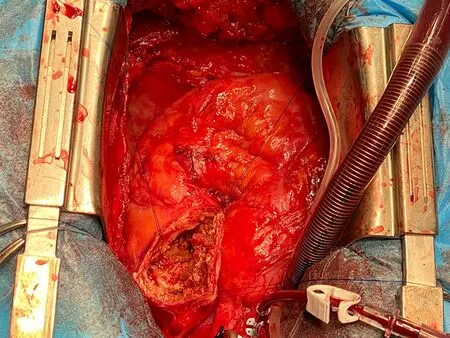
Figure 5 The aneurysmal sac is opened and 6 stiches are placed for surgical exposure.
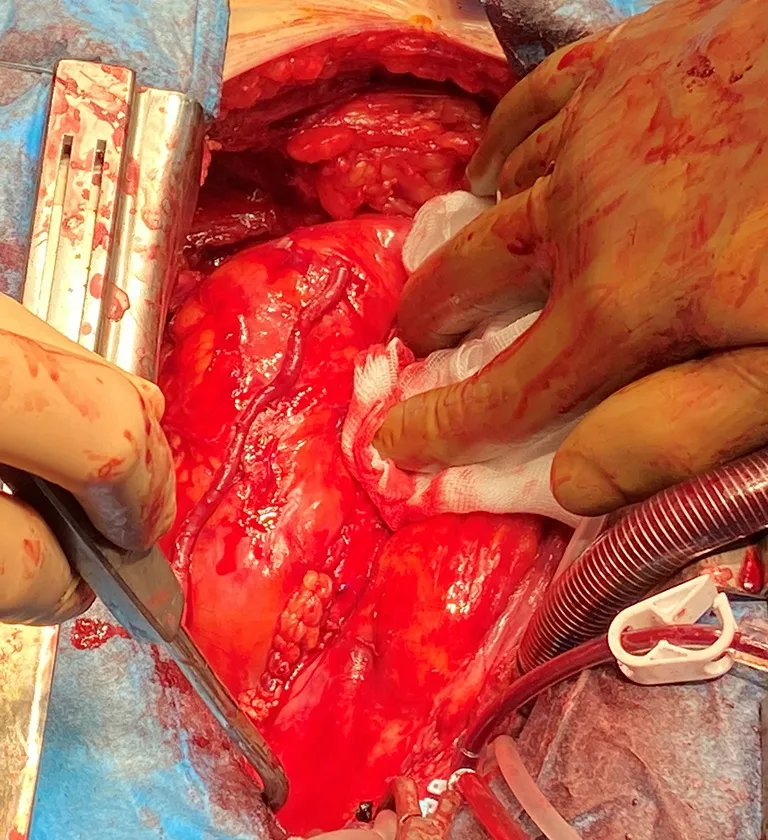
Figure 6 Final result. The aneurysmal sac is closed and a coronary artery bypass is performed.
The recovery was marked by a temporary kidney failure not needing ultra-filtration (max. creatinine of 293 mol/L in a context of CKD). After the correct intrahospital equilibration of international normalized ratio (INR), the patient was discharged after 18 days.
Discussion
The most frequent cause of CAA is atherosclerosis, but other causes include trauma (i.e., post coronary angiography), inflammatory (i.e., Takayasu or Kawasaki arteritis, Beh?et disease), infectious (i.e., syphilitic aortitis) or genetic connective tissue diseases (i.e., Marfan syndrome) (1). In our case, we have excluded all other causes except atherosclerosis and genetic diseases. The genetic study will need some years to give us definitive answers, but the association seems very likely given the presence of other arterial aneurysms and early varicose veins.
In symptomatic and giant CAA, the treatment is generally surgical (3), consisting in surgical ligation of the sac, aneurysmectomy or thrombectomy associated to the revascularization of the occluded vessel (4). However, percutaneous treatments have also been proposed. It is the case of the implantation of an off-label covered stent to exclude the aneurismatic sac, initially designed to address acute perforation of a coronary artery during percutaneous angiography or angioplasty. Other authors have proposed coil embolization of the aneurismatic sac, eventually implanting a coronary stent afterwards (3). Recently published studies have reported comparable short- and long- term results between percutaneous and surgical strategies for addressing giant CAAs (5,6). On the other hand, the percutaneous therapeutical strategy is not always possible due to anatomical complexity and technical aspects.
To date, a consensus is lacking due to the rarity of reported cases and the still unpredictable natural history. In our case, the extrinsic compression of the CX and PA made evident a seemingly chronic medical condition, confirmed also by the atherosclerotic yellowish “old” material found intra-operatively inside the aneurysm and by the relatively calcified walls. The extrinsic compression of the CX artery required with no doubt a surgical approach, as the percutaneous treatment wouldn’t have addressed the mass effect of the giant aneurysmatic sac.
In conclusion, more clinical evidence is needed to standardize the approach for the rare condition of giant CAAs. Causes should always be investigated when this pathology is encountered: some inflammatory diseases of the vessels may frequently underly and benefit from specific medical therapy.
Acknowledgments
Funding: None.
Footnote
Provenance and Peer Review: This article was commissioned by the editorial office, Chinese Journal of Thoracic Surgery for the “International Thoracic Surgery Column”. The article has undergone external peer review.
Reporting Checklist: The authors have completed the CARE reporting checklist. Available at https://dx.doi.org/10.3877/cma.j.issn.2095-8773.2021.03.05
Conflicts of Interest: All authors have completed the ICMJE uniform disclosure form (available at https://dx.doi.org/10.3877/cma.j.issn.2095-8773.2021.03.05). The “International Thoracic Surgery Column” was commissioned by the editorial office without any funding or sponsorship. AM serves as an unpaid editorial board member of Chinese Journal of Thoracic Surgery from May 2021 to April 2023. The authors have no other conflicts of interest to declare.
Ethical Statement: The authors are accountable for all aspects of the work in ensuring that questions related to the accuracy or integrity of any part of the work are appropriately investigated and resolved. All procedures performed in studies involving human participants were in accordance with the ethical standards of the institutional and/or national research committee(s) and with the Helsinki Declaration (as revised in 2013). Written informed consent was obtained from the patient.
Open Access Statement: This is an Open Access article distributed in accordance with the Creative Commons Attribution-NonCommercial-NoDerivs 4.0 International License (CC BY-NC-ND 4.0), which permits the noncommercial replication and distribution of the article with the strict proviso that no changes or edits are made and the original work is properly cited (including links to both the formal publication through the relevant DOI and the license). See: https://creativecommons.org/licenses/by-ncnd/4.0/.

